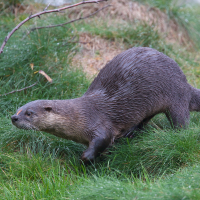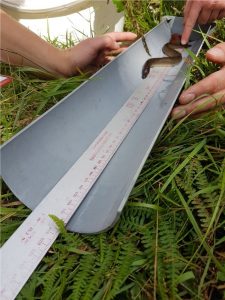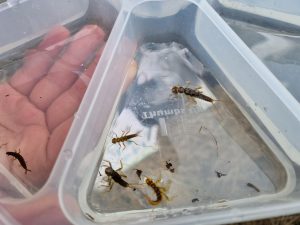World Wildlife Day
Sunday the 3rd March 2024 was World Wildlife Day! A day dedicated to recognising the roles and contributions of wildlife to people and the planet. Freshwater habitats such as rivers, lakes and ponds are essential for diverse and healthy wildlife ecosystems. The work we do here at SCRT aims to actively improve these habitats for aquatic species such as salmon, trout, otter, kingfishers and more!

One project with a heavy focus on these habitats is our involvement in the Upper Duddon Landscape Recovery Project. This project aims to restore nearly 3000 hectares of the Upper Duddon Catchment, including a large stretch of the main River Duddon and its tributaries. Currently in the feasibility and optioneering stage, interventions will create new habitat for salmonids, water vole and many more aquatic species. However, the importance of these habitats is a key consideration across much of the work we do from projects under Farming in Protected Landscapes (FiPL) to easements on barriers to the migration of the critically endangered European eel.

Why is wildlife important to freshwater ecosystems?
Wildlife provide services to us, such as regulating the air we breathe, nutrient cycling and the water cycle.
The installation of buffer strips along a watercourse is a great example of this and a project type we complete regularly. As trees and vegetation are allowed to grow along the bank of the watercourse, water and nutrients are absorbed from the soils, photosynthesis converts carbon dioxide to oxygen and falling leaves provide food sources for invertebrates.
What are some examples of freshwater species? And why are they important?
Both water voles and salmonids are Foundation species – species that are important due to their large biomass in the ecosystem. That’s because they provide food for almost all species above them in the freshwater food chain. The brown trout is also an example of a Keystone species – a species that helps define a whole ecosystem and their populations can be a direct indicator of an ecosystems health. Projects such as fish refuges, putting trees into rivers to provide shelter or wetland scrapes providing shallow ephemeral ponds for birds and invertebrates, create important habitat for these species.
Species higher up the food chain such as birds and otter are also key to a healthy and functioning ecosystem. Regulatory services through mechanisms such as seed dispersal and population regulation are critical to maintain balance in an ecosystem. Projects such as leaky dams, buffer strips and tree planting all help improve water quality and food availability. These all have direct and positive impact on the wider freshwater ecosystem.
